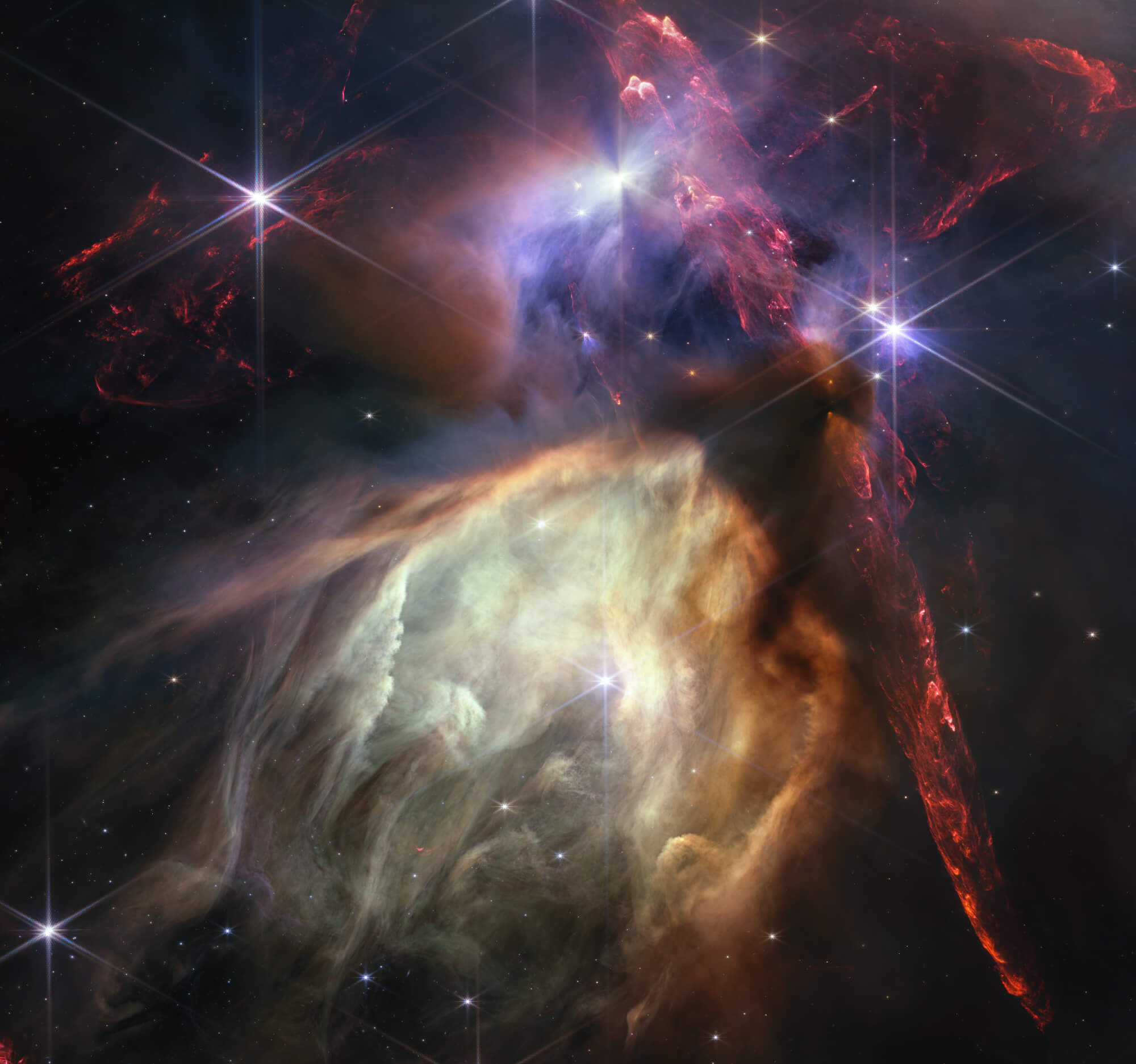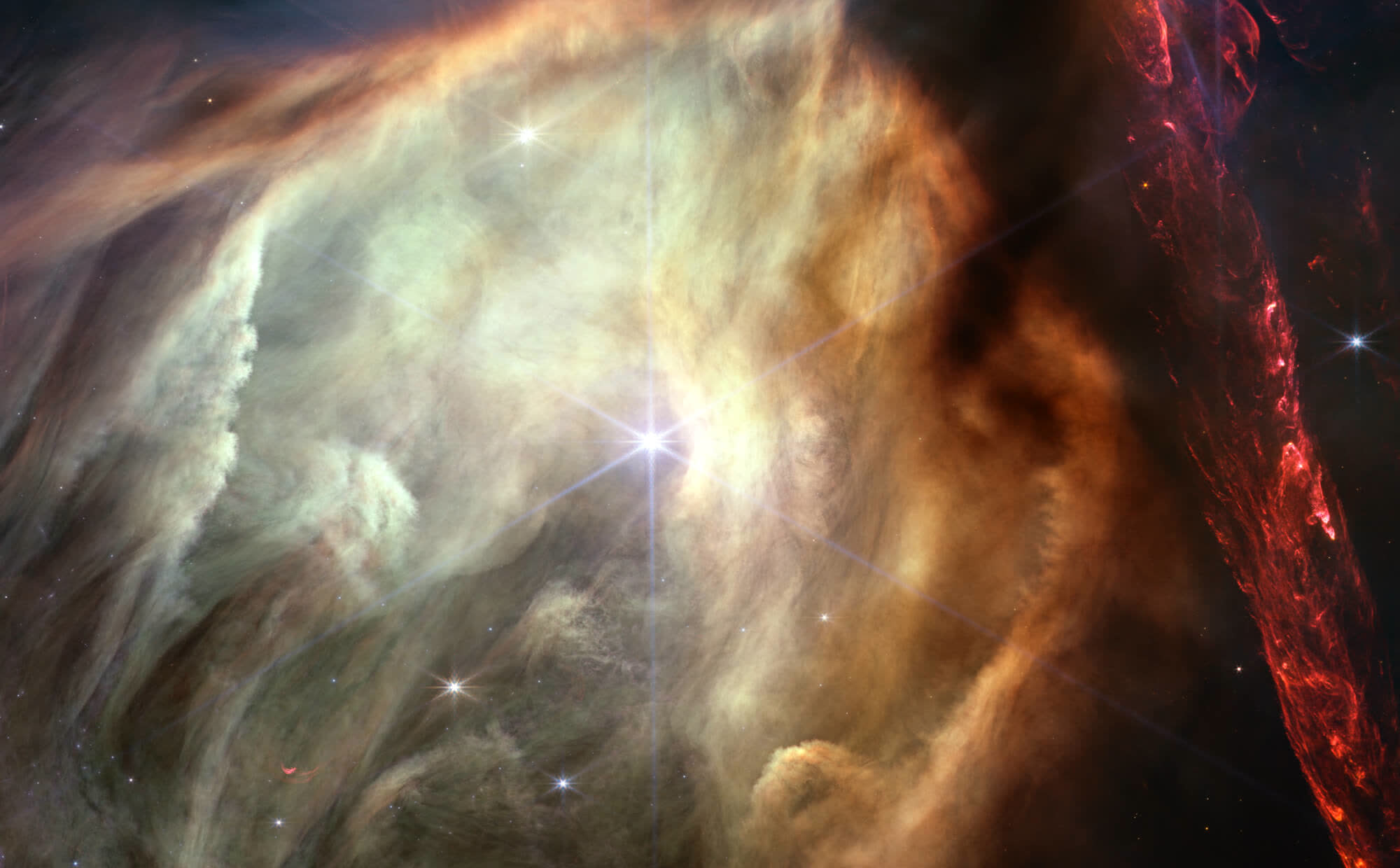In a nutshell: It has been one year since NASA unveiled the first full-color images from the James Webb Space Telescope. What better way to celebrate the anniversary than with yet another jaw-dropping photo from the space observatory.
The anniversary image depicts a block of space in the Rho Ophiuchi cloud complex, the nearest star-forming region to us. Despite being 390 light-years away, Webb was able to capture the scene in stunning detail.
The celestial view includes approximately 50 young stars, each similar in mass to our Sun or smaller. NASA said the darker areas in the photo are the densest, and play host to still-forming protostars encased in thick dust. Bipolar jets of molecular hydrogen, highlighted in red, occur when a star first penetrates its natal pouch, much like a newborn baby stretching its arms out for the first time.
In the lower half of the image, the star S1 has carved out a glowing cave of dust that is surrounded by polycyclic aromatic hydrocarbons, carbon-based molecules that are among the most common compounds in space. S1 is the heftiest star in the photo, and the only one that is larger than the Sun. Other stars exhibit shadows indicating protoplanetary disks - planetary systems in the making.
The best of Webb's first year
Klaus Pontoppidan, who has served as Webb project scientist since before the telescope's launch and through the first year of operation, said our Sun experienced a phase like this long ago. "Now we have the technology to see the beginning of another's star's story," Pontoppidan added.
Webb Senior Project Scientist Jane Rigby said that with a year of science under their belts, they now know exactly how powerful the telescope is. "Webb's science mission is just getting started – there's so much more to come."

